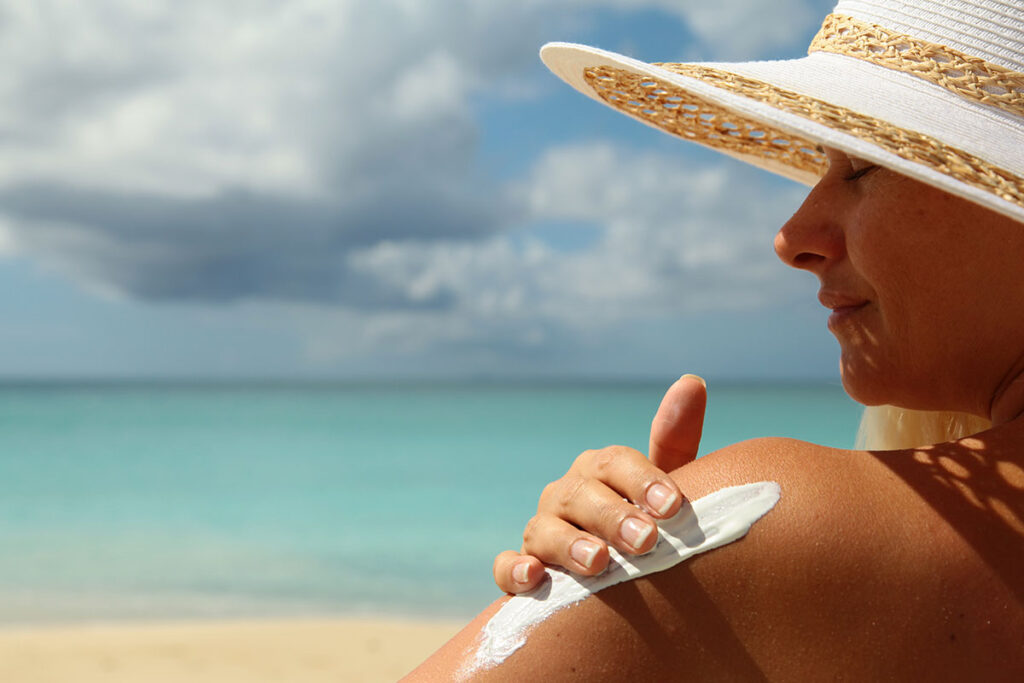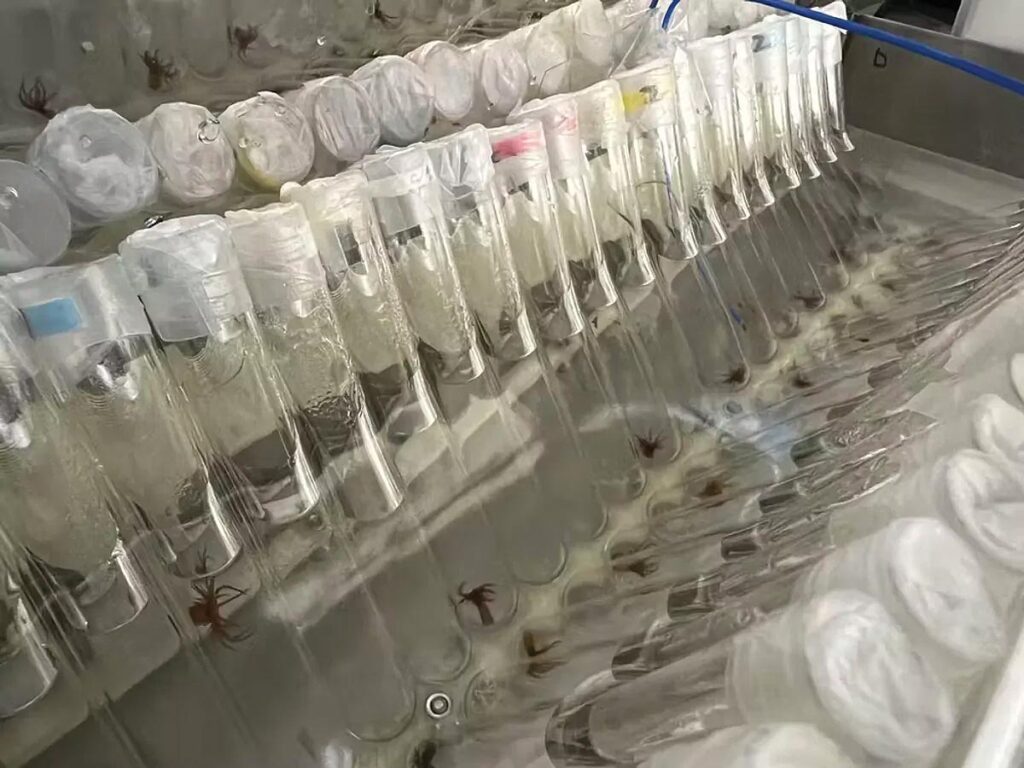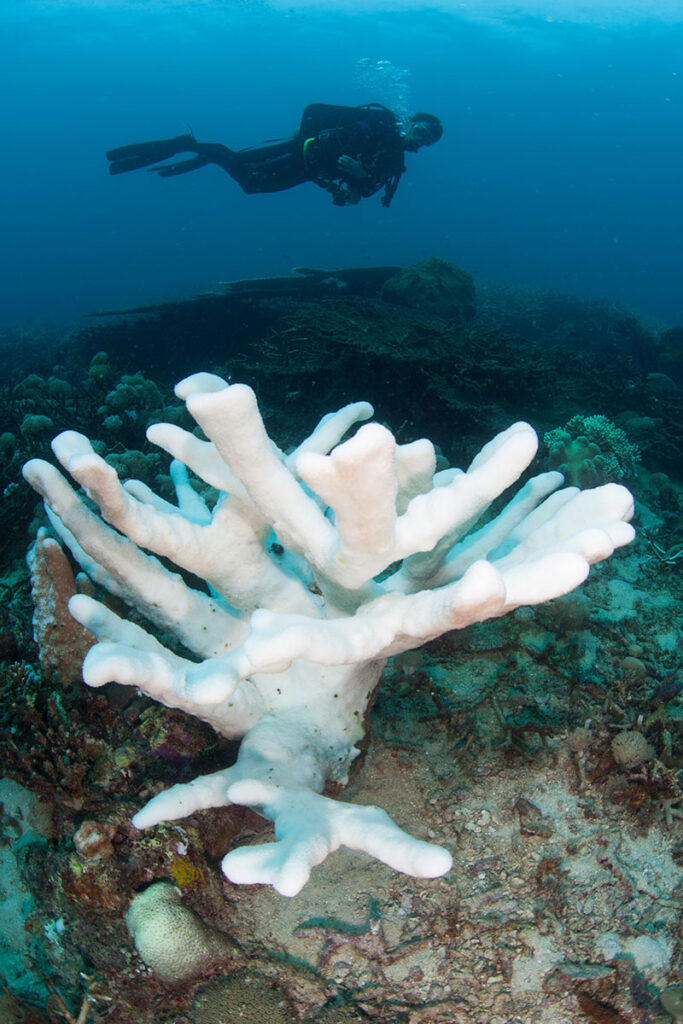
Despite several years of warnings, many off-the-shelf sunscreen products continue to be laced with components capable of bringing harm or death to exquisitely sensitive corals and anemones. Reef ecologists estimate that some 14,000 tons—more than the combined weight of 300 Gray Whales—of potentially lethal skin-protection products are being washed into the world’s warm tropical and subtropical waters annually. Ironically, they say, a major culprit is eco-tourism, which brings tens of millions of toxin-slathered visitors who profess to love coral reefs to islands and beaches.
Now researchers at Stanford University have revealed the mechanism by which oxybenzone, a chemical found in many sun-protection products, triggered the release of damaging radicals in cnidarians exposed to sunlight.
“It would be a sad irony if ecotourism aimed at protecting coral reefs were actually exacerbating their decline,” said Djordje Vuckovic, a Stanford Ph.D. candidate and lead author of a new study published in Science. “My hope is that our research will help lead the way to developing coral-safe sunscreens.”
Scientists have known for some time that oxybenzone, an organic compound found in many sunscreens, can damage corals. As a result, sunscreens with this compound have been banned in the U.S. Virgin Islands and Hawaii, the island nation of Palau, and Bonaire, an island municipality of the Netherlands, among other places. However, the mechanisms by which oxybenzone does harm have largely remained a mystery, making it difficult to ensure that sunscreen components proposed as alternatives are truly safer for corals.
In their new study, Stanford researchers used Aiptasia anemones as surrogates for corals, which are harder to experiment with, as well as mushroom corals. Exposed to oxybenzone in artificial seawater under simulated sunshine, the anemones all died within 17 days, whereas anemones exposed to oxybenzone in the absence of simulated sunlight remained viable.
“It was strange to see that oxybenzone made sunlight toxic for corals—the opposite of what it is supposed to do,” said Mitch. “The compound is good at absorbing light within the waveband we tested, which is why it’s so common in sunscreens.”

After absorbing ultraviolet light, oxybenzone is designed to dissipate the light energy as heat, preventing sunburn. The anemones and corals, however, metabolized oxybenzone in such a way that the resulting substance formed damaging radicals when exposed to sunlight. In addition to this vulnerability, the researchers found evidence for a coral defense mechanism. Symbiotic algae (aka “zooxanthellae”) in corals appeared to protect their hosts by sequestering within themselves the toxins that corals produced from oxybenzone. As ocean waters warm, stressed corals expel their algae partners, exposing bone-white coral skeletons.

Oxybenzone may not be the only sunscreen ingredient of concern, the researchers warn. The same metabolic pathways that appear to convert oxybenzone into a potent toxin for corals may do something similar with other common sunscreen ingredients, many of which share similar chemical structures and so could form similar phototoxic metabolites.
Many sunscreens marketed as coral-safe are based on metals, such as zinc and titanium, rather than organic compounds, such as oxybenzone. Although these sunscreens are fundamentally different in how they function, it is not clear whether they are actually safer for corals, according to the researchers, who are planning to investigate the matter further.
Craig Downs, Ph.D., executive director of Haereticus Environmental Laboratory, has led efforts to alert the public to the dangers of countless sunscreen products. His advice:” When looking for a non-toxic sunscreen, use the same rule of thumb as you do for foods. “Look at the ingredient list, and if you can’t pronounce it, then I think you should be concerned,” says Downs. Namely, you want to avoid the three Os: oxybenzone, octocrylene, and octinoxate, he says. Oxybenzone is detailed above, but octocrylene and octinoxate are just as bad.” Both Haereticus and the Environmental Working Guide (EWG) have online consumer guides to buying and using reef-safe sunscreens. (See below.) Aquarists who put hands into their reef systems, perhaps after mowing the lawn or a trip to the shore, may wish to find and use safe sunscreens to avoid introducing toxins that might impact various photosynthetic animals.
The research was funded by the Stanford Woods Institute for the Environment’s Environmental Venture Projects program and the National Science Foundation.
—from materials provided by Stanford University; original text by Rob Jordan
REFERENCES
Djordje Vuckovic, Amanda I. Tinoco, Lorraine Ling, Christian Renicke, John R. Pringle, William A. Mitch. Conversion of oxybenzone sunscreen to phototoxic glucoside conjugates by sea anemones and corals. Science, 2022; 376 (6593): 644 DOI: 10.1126/science.abn2600
Haereticus Environmental Laboratory: How to Actually Buy Non-Toxic Sunscreen, 2021. https://haereticus-lab.org/how-to-buy/
EWG’s Guide to Sunscreens: https://www.ewg.org/sunscreen/





Trackbacks/Pingbacks